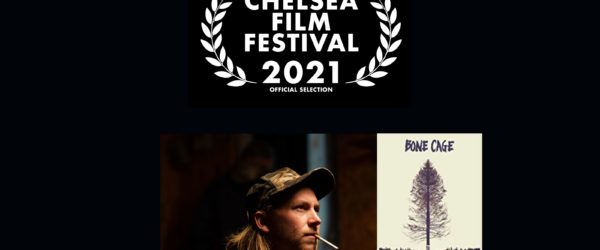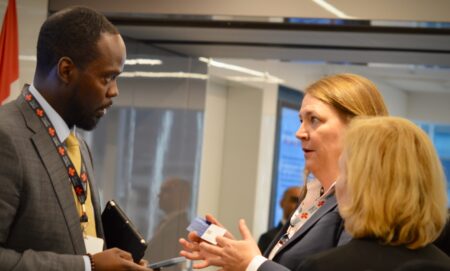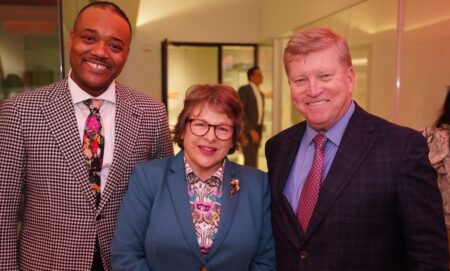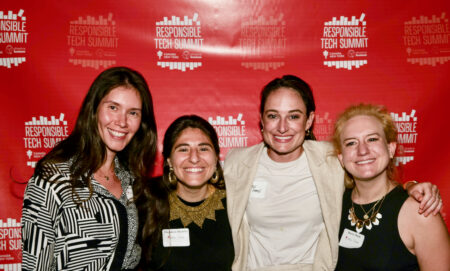In the new film Bone Cage, protagonist Jamie is a lumberjack, but he’s definitely not OK. By day he operates a processor, a massive alien-looking forestry machine of spinning blades and spikes that uproots and slices trees into logs with brutal efficiency. After each shift, he picks up injured animals whose homes he’s destroyed and tries to nurse them – and by extension, himself – back to health.
But as his fiancé observes, “half of what [he] rescues dies.”
Bone Cage is based on Catherine Banks’ Governor General’s Award-winning play that explores the emotional and psychic damage that befalls characters constantly walking a tightrope between success and ruin. Released in July 2021, the film has won 26 of the 30 award nominations it’s received, most recently that of Best Narrative Feature Film at the 2021 Albuquerque Film & Music Experience. It’s also the first feature-length film for director Taylor Olson (who wrote the screenplay and starred in a theatrical run of the play) and was an official selection of this year’s Chelsea Film Festival as part of its Spotlight on Canada.
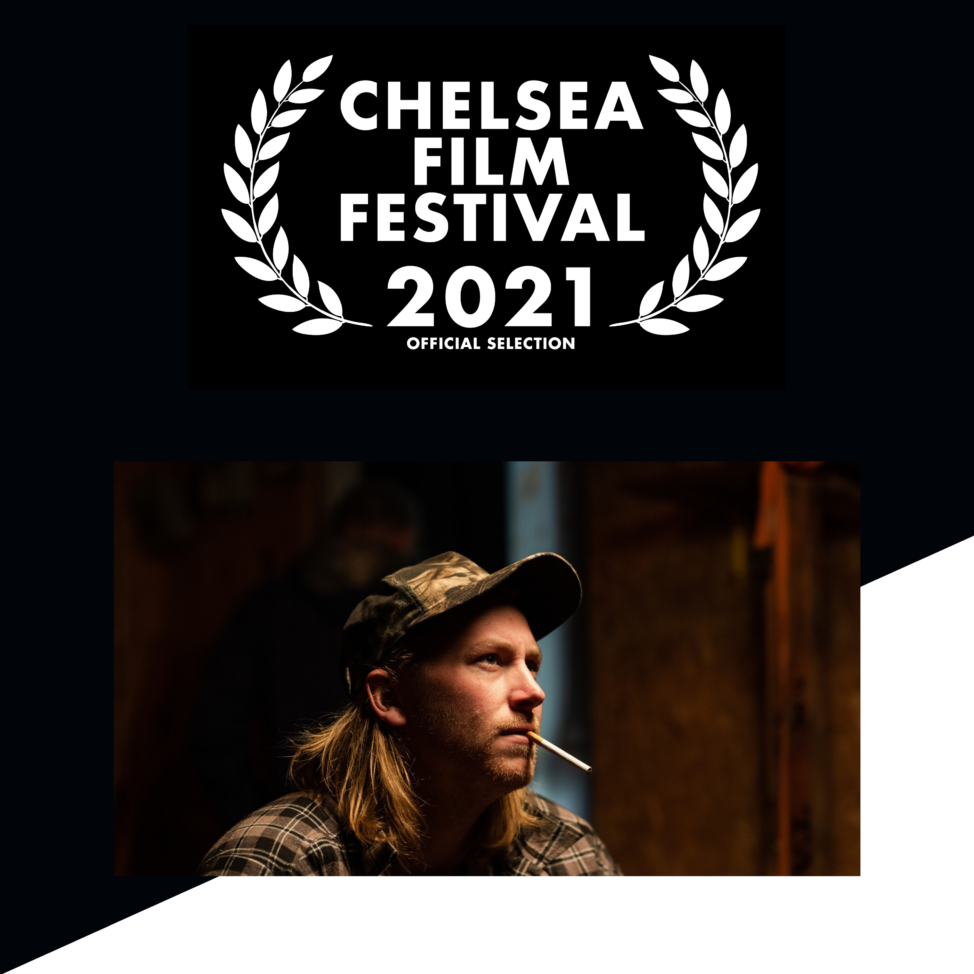
Dreams of escape and echoes of a Canadian cinema classic
At its centre is Jamie (played by Olson), a 20-something lumberjack in central Nova Scotia whose hulking frame and frequent profanity obscure a sensitive and deeply empathic soul. Jamie dreams of a better future than the beers and bar fights he’s surrounded by – in this case by becoming a helicopter logger in British Columbia. But like his cinematic precedents Pete and Joey in Donald Shebib’s 1970 classic Canadian film Goin’ Down the Road, poor decisions and Jamie’s own limitations will conspire against him – with tragic consequences.
“I think the film is polarizing for a lot of people,” says Olson from his home in Halifax, Nova Scotia. “They either really like it or they really don’t because of the content and the way we decided to shoot it. But the most positive thing for us is that the community we feature connected with it. That’s their world we’re showing.”
I think the film is polarizing for a lot of people. But the most positive thing for us is that the community we feature connected with it. That's their world we're showing.
Shot on location amid the tract homes and clear cuts of central Nova Scotia, the film reveals the economically precarious lives of characters who depend on a single industry – in this case, forestry – whose decline they are actively contributing to with each new clear-cut.
Much of the film’s power comes from the push and pull between opposing forces that manifest themselves in the actions of the characters and the world they inhabit – and that influence the course of events. We talked to Olson about the influence of these dualities and how he chose to treat them in the film.
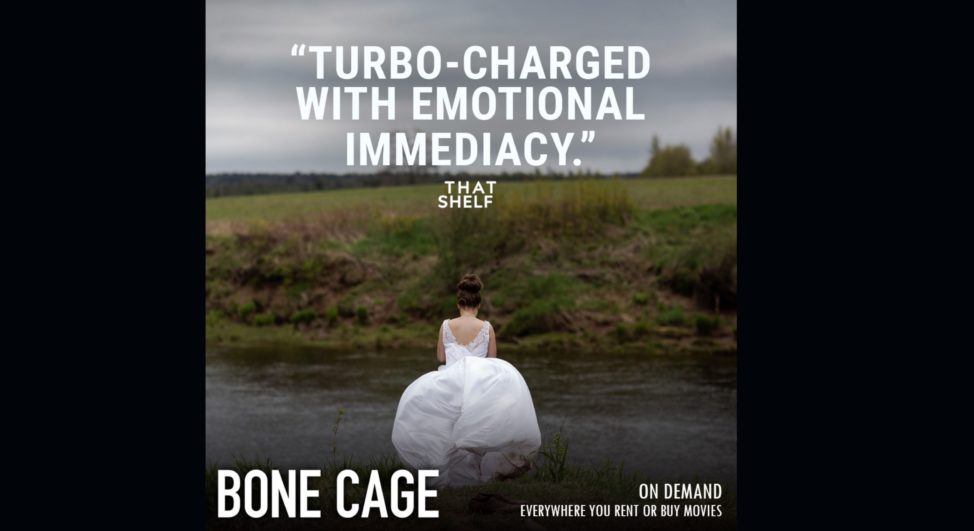
Brutality vs. delicacy
That’s probably the biggest one. Jamie is a perfect example of how the ideals of manhood go hand-in-hand with the destruction of the earth. He’s a hard case on the outside, but there’s a sensitive part inside. He’s put on an armor of performative toxic masculinity to protect himself in his community. You see glimpses of the parts of him he wants to change. But over the years this armor has become part of himself and he can’t take it off. Krista, his fiancé, is the opposite to Jamie’s brutality and violence. She has a pure view of the world and what their life could be there.
Freedom vs. confinement
Jamie is isolated within himself. He has a sense of freedom – he’ll be spontaneous and do whatever he wants within his world, including quitting his job. But overall, he’s confined by his environment. He’s being held back by the very thing he’s trying to escape – his lack of an education, money, resources, having to take care of his family. We wanted to explore this in the cinematography – isolating him within vast landscapes. He’s alone in the frame a lot.
Pain vs. numbness
That’s what a lot of the characters are living. They feel so much pain that they’ve just shut down. Jamie feels absolutely nothing in the processor. His fatal flaw is that he cares so much about the animals and the environment. He wouldn’t be in so much pain if he didn’t care. Clarence – Jamie’s father – is either in absolute and utter pain 24/7 or he’s drunk.
There’s an idea in the film that to hold onto hope means living in an alternate reality, because otherwise there’s nothing to live for. Jamie holds onto the idea of leaving for British Columbia. It’s never going to happen unless he cuts ties and completely walks away. But he has to live in that unreality to hold onto hope. That’s mirrored by Clarence, who lives in his own unreality to hold onto the son he’s lost.
Nature vs. machinery
My family’s been working in the logging industry for generations. I’ve seen clear-cuts out in British Columbia – they’re pretty devastating. We wanted to show that this devastation is caused by us – that the toxic performative masculinity that Jamie puts on is the reason we’re in this situation in the first place with respect to the environment. It’s easier to make a quick buck with clearcutting than to live within our means with the resources that the land provides us.
Tame vs. wild
There are different perspectives on this in the film. Clarence is already too far gone to come back. Jamie is teetering on the edge. Krista’s the one with rose-colored glasses – the tame to Jamie’s wild and impulsive. That’s also in the scene when they’re lying in bed together. Jamie says he’d be a wolf. Krista says she’d be a deer. Jamie knows that he’s almost preying upon her and taking away the pieces of her that are innocent and beautiful. This appears again near the end of the film when she’s running through the mud in wedding dress – and it’s the first time she swears.
There’s a magical moment when Jamie’s under the water – we wondered: what would be best in this situation? Would it be better for him if he never came up? What is better for her?
The film also switches its point of view at that moment to Krista’s perspective and we’re left to wonder: what will her life become at that point?
Watch Bone Cage online
Bone Cage is distributed by levelFilm. Buy, rent or stream it now on:

